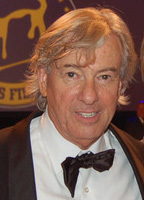Paul (film director) Verhoeven's Human Design Chart
5/1 Sacral GeneratorDutch film director, screenwriter, and producer.
He was the only child of the teacher Wilem Hendrik Verhoeven (30 April 1901, Dordrecht) and Neeltje van Schaardenburg (10 March 1902, Dordrecht), a hat designer. They married 26 May 1926 in Dordrecht. His mother was 36 when Paul was delivered by forceps and they called him “Chineesje” because of his deformed head. But Paul was a bright child who visited at age 11 the Gymnasium.
In 1943 the family moved to Den Haag, where his father became head of the Van Heutsz school in het Bezuidenhout. As a boy Paul grew up with allied bombing of the V2 rocket launching installations including the major attack of 3 March 1945.
After graduating the Gymnasium Haganum in Den Haag his parents sent him to family in France , as he was too young to study. From 1955 till 1960 Paul studied Physics and Mathematics at the University of Leiden. In 1960 he went to the Film academy in Amsterdam. He debuted with “Een hagedis teveel” (1960, A Lizzard Too Much). During his military service in the Navy he made “Het Korps Mariniers” (1965).
He aspired to become a film director, but when his girl friend Martine Tours in 1966 became pregnant, he feared that he had to earn money as a boring him mathematics teacher. Abortion was still illegal then. He became horrified by the idea, got into contact with the Pentecostalism movement and lost contact with reality. For two weeks he had a religious delusions, thinking that the King Kong ape in the cinema was God and that the wholly spirit had fallen on him to make him a preacher in Africa. When somebody mentioned the possibility of an illegal abortion, the psychotic episode disappeared.
After this experience he would have a very ambivalent relation with religion, becoming a sceptic Jesus researcher, trying to find historical evidence of the historical Jesus all of his life. In 1986 he became a member of the Jesus seminar, a group of ca 150 critical scholars and laymen founded by Robert Funk. Early September 2008 he released a book “Jezus van Nazareth – een realistisch portret”. The book was translated in English (2000)
His filmography is extensive including Hollywood successes like RoboCop (1987), Total Recall (1990) and Basic Instinct (1992). See the internet sources for it.
But he started with “magic realistic” Dutch movies that deeply moved the public like “Keetje Tippel” (1975), based on the autobiographical “Jours de famine et de détresse” of Neel Doff. His film of “Turk Fruit” (Turkish Delight) made writer and sculptor Jan Wolkers famous. As well as his cinematographer Jan de Bont and the actors Rutger Hauer and Monique van de Ven. His last Dutch movie “Zwartboek” (Blackbook, 2006) dealing with the mysteriess of WW2 was nominated for a BAFTA Award for Best Film Not in the English Language, and was voted for as the best Dutch film ever made by the Dutch public in 2008.
Personal
On 7 April 1967 he married Martine Tours. They got two daugthers Claudia Verhoeven (1972) and Helen Verhoeven (1974, Leiden), who became a noted painter and sculptor based in New York and Amsterdam.
Link to Wikipedia
Discover More Famous People
Browse and analyze over 55,000 public figures and celebrities.
Ra Uru Hu
5/1 Manifestor
Martha Stewart
4/6 Manifestor
David Lynch
4/6 Generator
Barack Obama
6/2 Projector
Steve Jobs
6/3 Generator
Vladimir Putin
5/1 Manifestor
Michael Jackson
1/3 Projector
Kim Kardashian
3/5 Generator
Marilyn Monroe
6/2 Projector
Ariana Grande
2/4 Projector
Oprah Winfrey
2/4 Generator
Johnny Depp
2/4 ManifestorWhat is HumanDesign.ai and how does it work?
Curious what makes Paul (film director) Verhoeven tick? HumanDesign.ai instantly maps their exact birth data into a fully interactive clickable bodygraph chart, letting you hover or tap every center, channel, and gate for plain-language explanations. Bella, the platform’s built-in AI guide, adds context in real time, translating complex mechanics into everyday insights so you can see how Paul (film director) Verhoeven’s strengths, challenges, and life themes play out on-screen.
The same tools are waiting for you. Generate your own Human Design Chart in seconds, open a library of 2000+ suggested questions, and chat with Bella as often as you like to decode your design, daily transits, and even relationship dynamics.
Want to compare energies? Save unlimited charts for friends, family, or clients, then ask Bella to reveal compatibilities, composite patterns, or coaching tips, all in one conversation thread.
Start free with core features, or unlock our Personal and Pro plans for deeper dives: unlimited Q&A, celebrity chart search spanning 55,000+ public figures, white-label PDF reports, branded content generation, and a professional profile with built-in booking for practitioners. Whether you’re exploring your own potential or guiding others, HumanDesign.ai delivers an ever-expanding toolbox of AI-powered insights—no spreadsheets, no jargon, just clarity at your fingertips.
Ready to see yours? Signup for FREE today!

